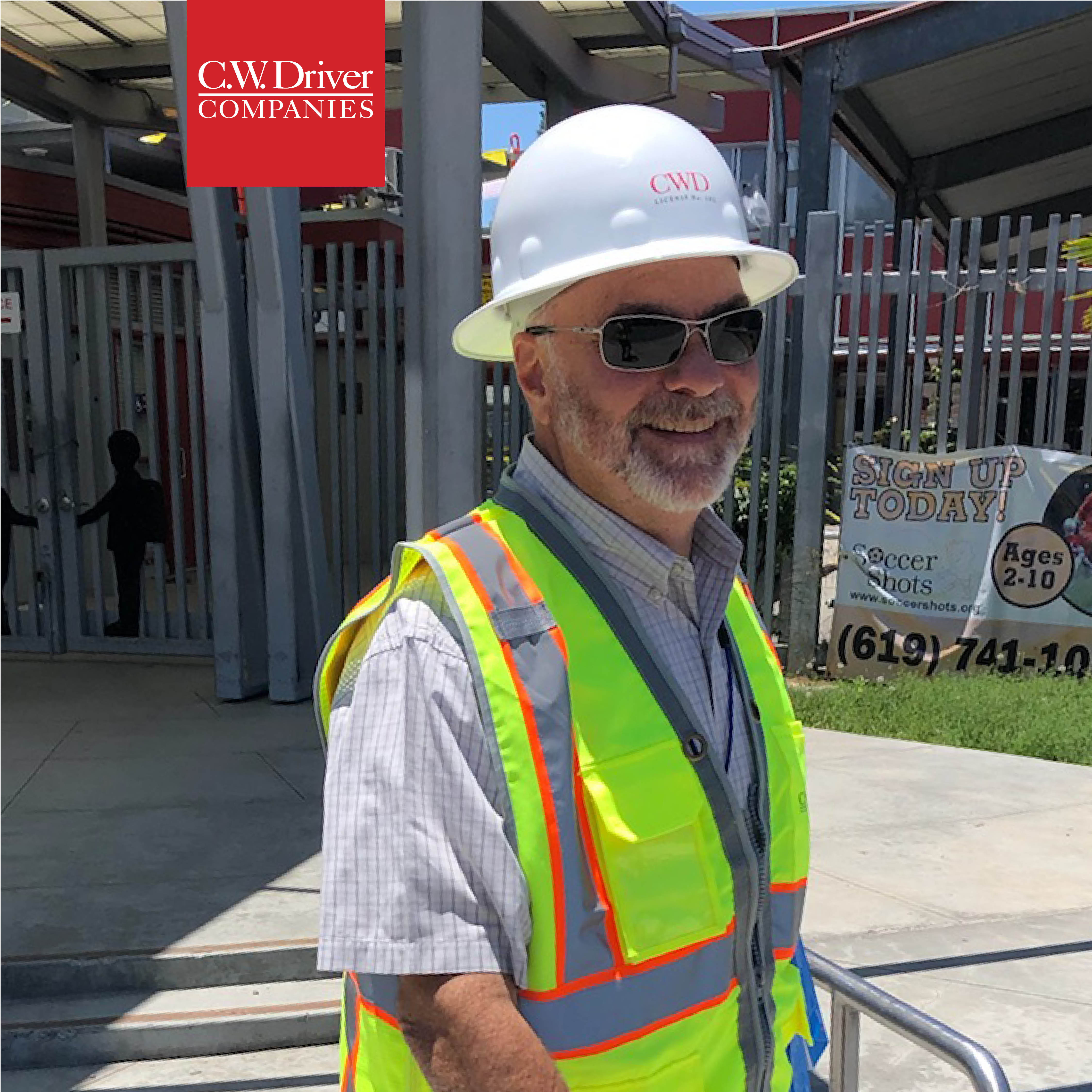Mike McConkey, Senior Superintendent, has been with C.W. Driver Companies for 18 years working primarily on K-12 education and community college district projects.
A majority of your work has been in the education market. What do you find most rewarding about working on these types of projects?
In the construction industry, you do not always get a choice as to what project you are assigned. DSA regulations require strict attention to detail and a regimented to-do list. Education projects are not the most glamorous, but they are one of the most important type of projects. My most memorable education projects have been at the Grossmont College campus. The original campus was built in the ’60s and felt dated. Over the course of four projects, I watched the school transform from a Community College esthetic to a four-year University feel. I will never forget the look on the faculty and student’s faces when they stepped foot into their new buildings for the first time. Even though I completed these projects over ten years ago, these memories and relationships have continued with me to different districts throughout my career.
What do you find most challenging about working on these types of projects?
The delivery method can make or break the success of a project. In my experience, the more collaborative the delivery method, the more successful the project. Traditionally, Construction Manager Multiple Prime (CMMP) projects have been the default delivery method in the education market. Most districts have only recently begun experimenting with different delivery methods. I have noticed a hesitation from some districts while working on projects with a collaborative delivery method. The processes are different and can scare some away without a full understanding of the benefits. My suggestion would be to start with Design-Build subcontractors. This is when strong key subcontractors are brought into the process early, saving time and money without changing the overall delivery method. It is important for districts to educate themselves on these new delivery methods and take steps to implement them on upcoming projects.
What is your biggest achievement while working at C.W. Driver Companies?
Some of my proudest moments while working at C.W. Driver have been after my most challenging projects. Dana Roberts, Chief Executive Officer, is heavily involved in our day-to-day activities. This is a breath of fresh air for me, coming from a giant construction company. During these challenging projects, Dana has stood by the project teams’ side and helped us make the projects a success. Even though C.W. Driver has grown significantly since I started, the small company feel is still deeply rooted in our culture. I believe that our culture and the people we work with are what make any project, no matter how difficult, a success.
As a Senior Superintendent, jobsite safety is a major priority. How do you promote safety on your projects?
Through the years, I have learned that the best way to promote safety on the jobsite is by creating a safety culture. I am a firm believer that the speed of the boss is the speed of the team. If you work hard, follow proper safety procedures, and treat everyone with respect, your team will follow suit. Team members learn more when you point out a safety concern and start a positive conversation rather than lecturing them on proper safety procedure. For example, if I see a trade contractor using a ladder incorrectly, we discuss the reason why the ladder is unsafe when used that way. This creates a memorable and positive experience that they will remember the next time they use the ladder. I hope to inspire people to really care about safety and leave a lasting impression that translates to every project after that.
Outside the construction industry, what are you passionate about?
Five years ago, I converted three shipping containers into a stylish yet functional home. As one of the first shipping container houses in San Diego, my 800 SF house has been a dream come true for my wife and me. I am a big advocate of alternative construction techniques. The county was hesitant at first with permitting the containers as a house. While shipping containers may seem like an odd choice initially for building materials, it is just steel and concrete. My home is no different than a normal home; it just looks like a shipping container! You can follow my container home journey on Instagram @thecontainerhomeproject to see every step of the process.


